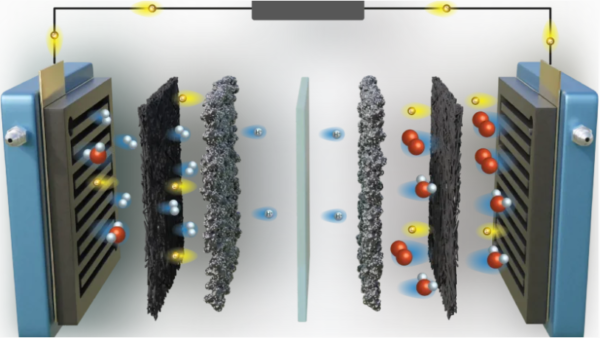
The catalyst layer of a fuel cell consists ofcarbon supports, platinum catalyst, and ionomer. As the ionomer play a role as proton conductor and thus affect cell performance, ionomer distribution analysis is crucial for the development of fuel cells. However, distinction of the ionomer from the carbon supports in SEM image contrast has been difficult, since they are both light element compounds. Figure 1 shows cross-sectional SEM images (a) to (c) of fuel cell catalyst layer taken at an ultra-low landing voltage of 10 V. On the surface and in the pores of the carbon supports, areas darker than the carbon support were confirmed (yellow arrows). Image (d) shows the EDX spectra obtained at the two areas enclosed by the red dashed lines in image (a). From the darker area (S1), the intensity of F: a constituent element of the ionomer, was detected stronger (green arrow) than that of the carbon support (S2), suggesting the darker areas the ionomer made of fluoriated polymer. The SU8700, with a magnetic field and electrostatic field compound lens, enables high contrast observation of the ionomer in the fuel cell.
Learn More?
Please click on ‘Request Application Note’ and we will send you the full application note ‘Ionomer distribution analysis with Ultra-low voltage SEM to improve fuel cell performance’.
